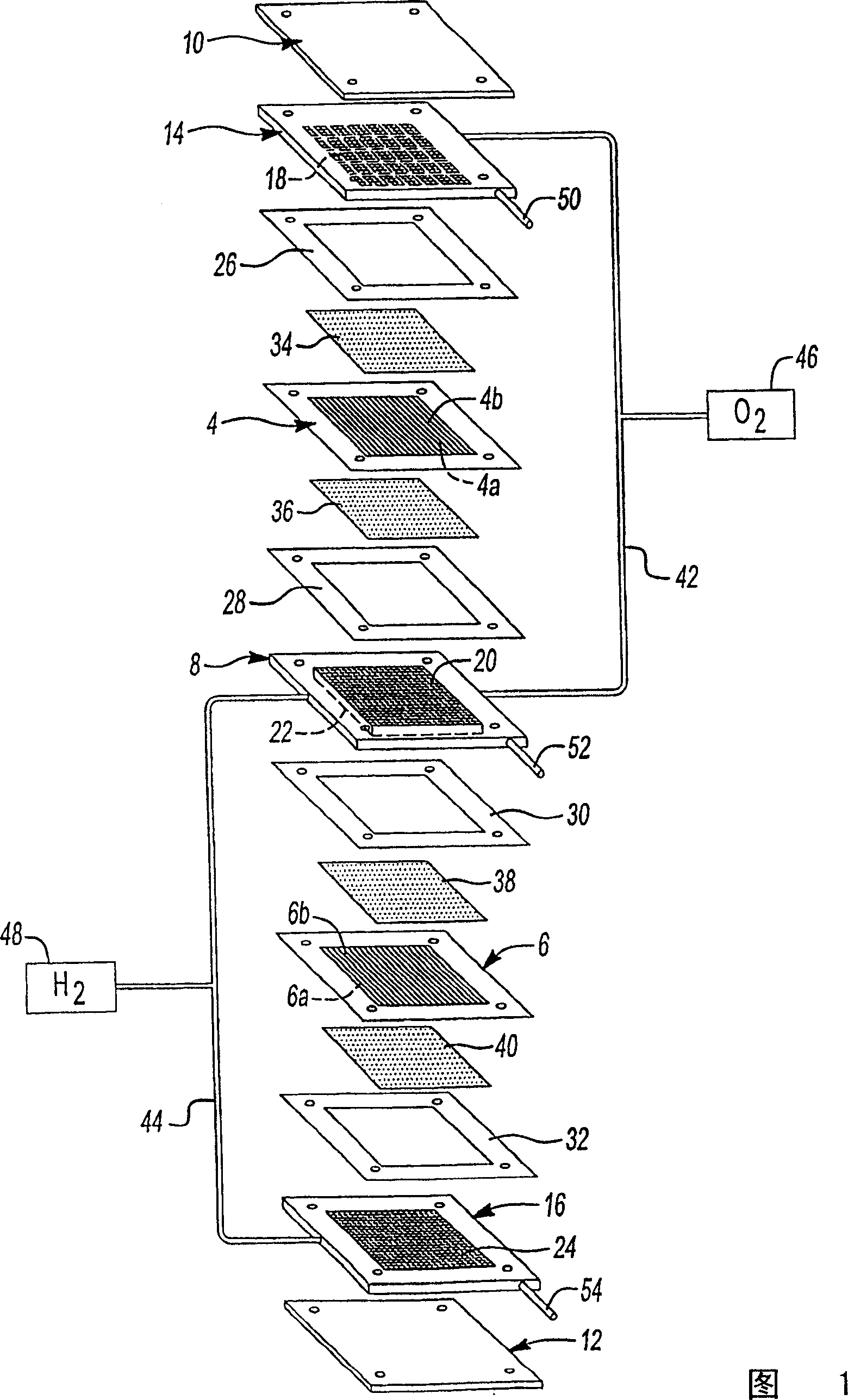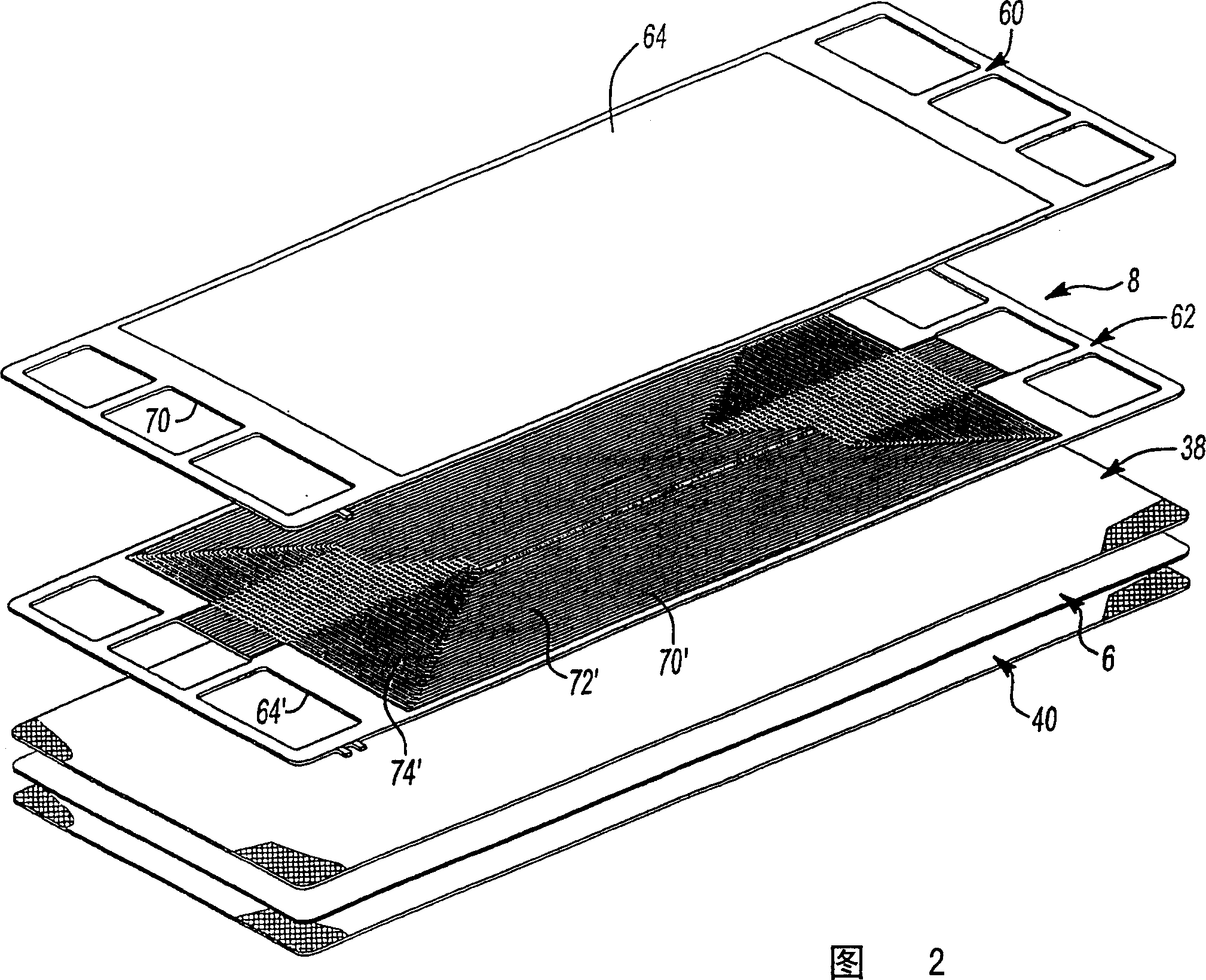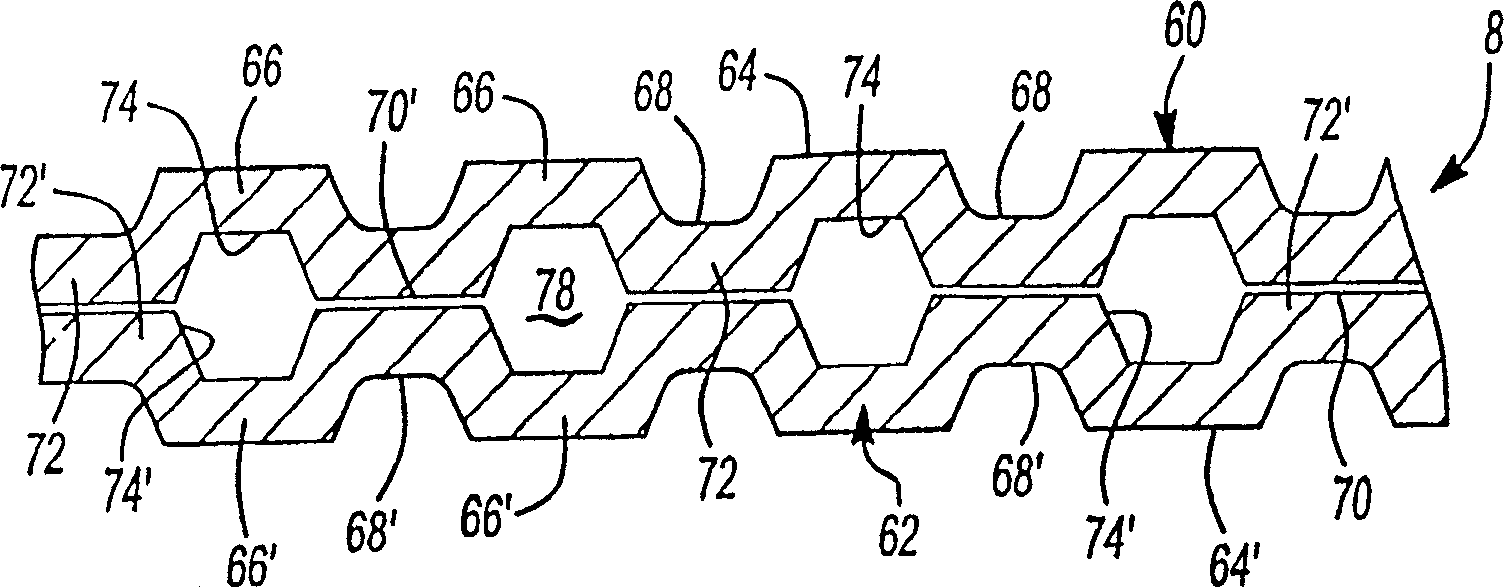Coolant flow field design for fuel cell stacks
A technology of fuel cell and coolant flow, which is applied in the direction of fuel cell additives, fuel cell components, fuel cells, etc., and can solve problems such as insufficient cooling, supercooling, etc., to reduce costs, optimize reactions, and increase the overall system efficiency effect
- Summary
- Abstract
- Description
- Claims
- Application Information
AI Technical Summary
Problems solved by technology
Method used
Image
Examples
Embodiment Construction
[0022] The following description of preferred embodiments is exemplary in nature only and is in no way intended to limit the invention, its application or uses.
[0023] Before further describing the present invention, it is instructive to understand an exemplary fuel cell system to which the present invention pertains. In particular, FIG. 1 schematically depicts a PEM fuel cell stack having a pair of membrane electrode assemblies (MEA) 4 and 6 separated from each other by a non-porous, electrically conductive, liquid-cooled bipolar plate assembly 8 . Each MEA 4 and 6 has a respective cathode face 4a, 6a and an anode face 4b and 6b. MEAs 4 and 6 and bipolar plate assembly 8 are stacked between non-porous, electrically conductive, liquid-cooled monopolar plate assemblies 14 and 16 . Steel splints 10 and 12 are used to encapsulate the exemplary fuel cell stack. Connectors (not shown) are attached to the clamping plates 10 and 12 to provide positive and negative terminals for t...
PUM
 Login to View More
Login to View More Abstract
Description
Claims
Application Information
 Login to View More
Login to View More - R&D
- Intellectual Property
- Life Sciences
- Materials
- Tech Scout
- Unparalleled Data Quality
- Higher Quality Content
- 60% Fewer Hallucinations
Browse by: Latest US Patents, China's latest patents, Technical Efficacy Thesaurus, Application Domain, Technology Topic, Popular Technical Reports.
© 2025 PatSnap. All rights reserved.Legal|Privacy policy|Modern Slavery Act Transparency Statement|Sitemap|About US| Contact US: help@patsnap.com



